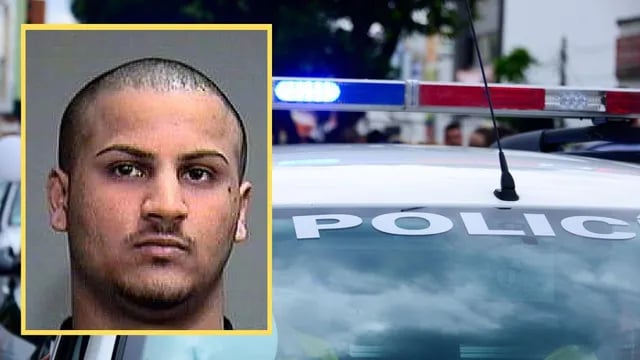The Fall of “Thanos”: How an Indo-Canadian Gangster Fueled a Global Drug Crisis
Opinder Singh Sian was known on the streets as “Thanos,” a name borrowed from a fictional villain who wanted to control the world. But Sian’s world wasn’t science fiction. It was painfully real, and so was the damage he caused. Behind his arrest in Arizona on June 27 lies a tragic story of how drugs, greed, and global crime networks have left families broken and communities devastated across borders.
NATIONAL
Thinkbrief
7/17/20253 min read


Opinder Singh Sian was known on the streets as “Thanos,” a name borrowed from a fictional villain who wanted to control the world. But Sian’s world wasn’t science fiction. It was painfully real, and so was the damage he caused. Behind his arrest in Arizona on June 27 lies a tragic story of how drugs, greed, and global crime networks have left families broken and communities devastated across borders.
Sian is not just accused of trafficking dangerous narcotics like fentanyl and meth. He is believed to have led one of the most sophisticated drug networks connecting suppliers in China, cartels in Mexico, criminal groups in Canada, and terror-linked operatives in the Middle East. The ripple effects of his actions were not limited to one country—they were felt across the world, and especially in the lives of everyday people.
From British Columbia to Global Cartels
Opinder Singh Sian grew up in Canada and eventually became the alleged head of the Brothers Keepers gang in British Columbia. What started as a small gang quickly evolved into a powerful criminal organization. Under Sian’s leadership, it expanded beyond Canada’s borders and into the heart of the global drug trade.
Authorities say his gang was deeply involved in transporting synthetic opioids like fentanyl, one of the most lethal drugs in circulation today. These drugs traveled from labs in China, through ports in Canada, and into the streets of American cities—fueling an overdose crisis that has claimed thousands of lives.
For many families, the drugs Sian allegedly helped distribute didn’t come with headlines or criminal records. They came with unbearable grief—children who didn’t wake up, parents who vanished into addiction, and communities that watched their sense of safety crumble.
A Web of Dangerous Alliances
Sian’s operations weren’t just about profit. Investigators believe his network also touched the darker world of geopolitical interests. His connections reportedly included operatives linked to Pakistan’s intelligence services, smugglers in Turkey, and Hezbollah-affiliated contacts in Lebanon and Dubai. These relationships helped him move drugs, clean money, and avoid detection.
Some officials believe that proceeds from his drug empire may have been used to support extremist groups, adding another layer of tragedy. What began as crime for money may have helped fuel violence and unrest in regions already struggling with conflict and instability.
The Moment of Arrest
Sian was arrested in Arizona after months of surveillance by the US Drug Enforcement Administration. He had been crossing borders under fake names, trying to stay ahead of the law. But his web of deception finally came undone. He now faces serious charges in the United States, including drug trafficking, conspiracy, and operating a transnational criminal organization.
If convicted, he could spend the rest of his life in prison. But for investigators, this arrest is not just about putting one man behind bars. It’s about dismantling a network that thrives on misery and chaos.
What It Means for Canada and India
Sian’s arrest is sending shockwaves through the Indo-Canadian community and beyond. In Canada, where Indo-Canadian gangs have increasingly clashed in violent turf wars, authorities are taking a closer look at how organized crime is growing—and how to stop it.
In India, law enforcement has long been concerned about overseas criminals using their operations to fund separatist movements and extremist agendas. Sian’s ties to Punjab and possible financial links to radical groups have rekindled those fears.
Governments on both sides of the world are now under pressure to improve cross-border cooperation and prevent other “Thanoses” from rising in the shadows.
Behind the Headlines
It’s easy to read a story like this and focus on the big names, the numbers, and the headlines. But it’s important not to lose sight of the human toll. Each shipment of fentanyl linked to Sian’s network may have ended in someone’s overdose. Each dollar laundered may have funded bullets or bombs somewhere far away. Each alliance he built was not just a business decision—it was a step deeper into a world where lives are lost long before justice catches up.
In the end, Sian was no supervillain, just a man who helped feed the worst kinds of suffering while hiding behind power and money. His arrest offers a glimmer of justice, but it also raises deeper questions—about how global crime networks thrive, how fragile the line is between profit and destruction, and how many lives it takes before someone like him is finally stopped.
For now, Thanos has fallen. But the work to repair what he helped break has only just begun.